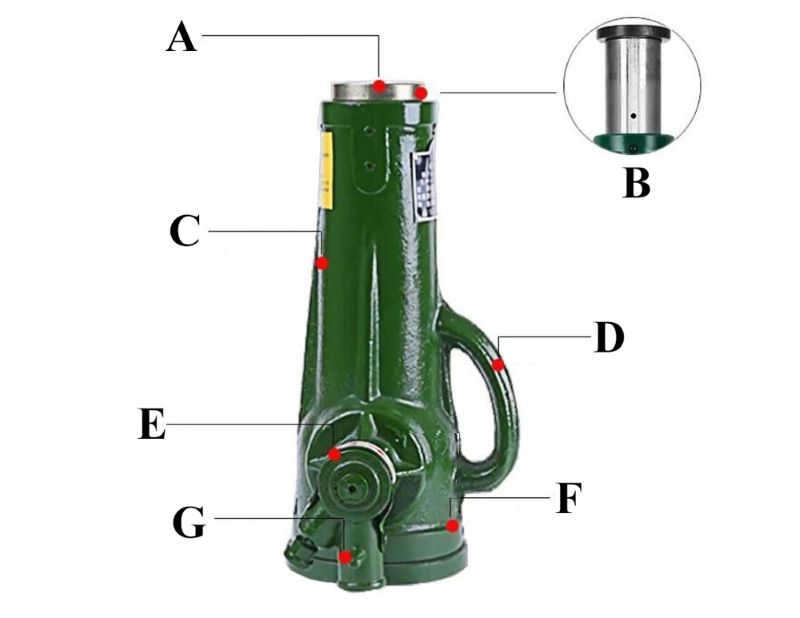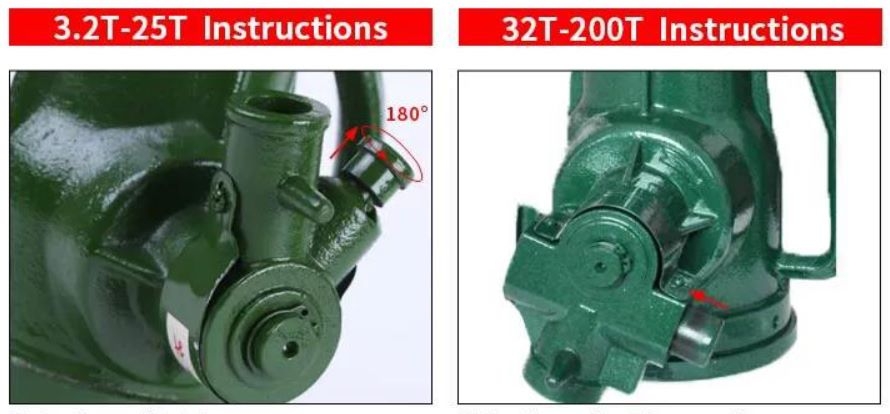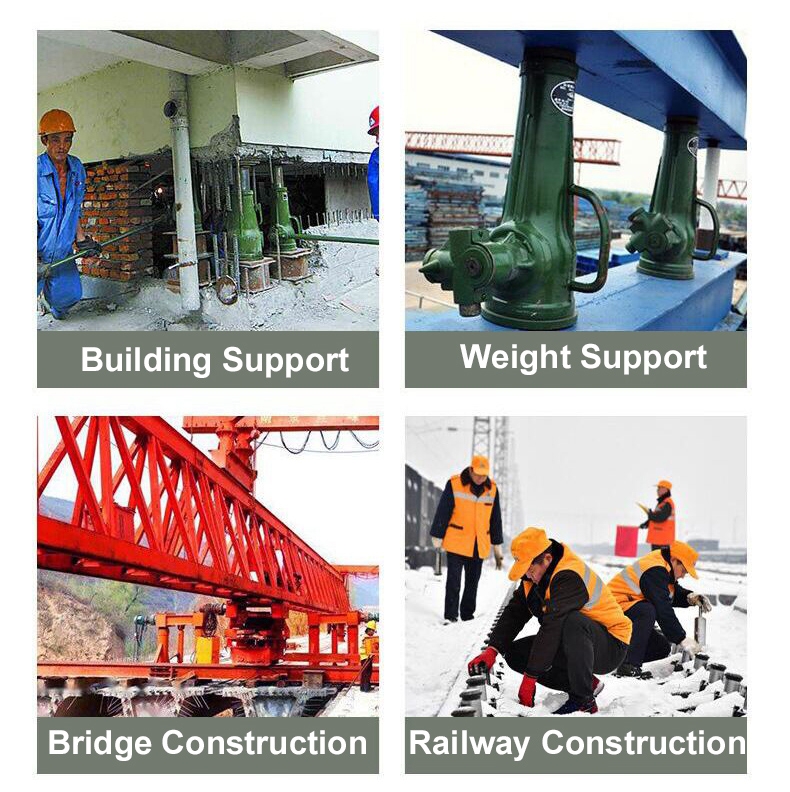Find an affordable adjustable screw jack at Tool.com. This 10-ton mechanical screw jack, with a minimum height of 280mm and a lifting height of 150mm, offers a reliable and efficient solution for lifting heavy loads.
Specifications
- Model: T-HT8432-10T
- Capacity (Load): 10 ton
- Jack Length: 280mm
- Total Length: 430mm
- Minimum Altitude: 280mm
- Lifting Height: 150mm
- Weight: 7.4kg
Features
- The integrated body design enhances the overall strength and improves the stability and safety in the process of use.
- The red line on the screw is the maximum jacking height indicator line, it is strictly prohibited to continue operation beyond this position to avoid danger.
- The surface of the multi-layer primer is treated by high-temperature baking, with good anti-corrosion properties, making it easy to paint, rust, and extending the service life.
- This manual screw jack does not apply to automobile jacking operations, please choose the use of reasonable scenarios according to the type of equipment load.
- Overloading is strictly prohibited; the threaded parts should be kept clean before and after use and lubricated regularly to ensure smooth operation.
- This product is only used for short-term jacking, not a substitute for support tools, and shall not be used for long-term load-bearing static use.
Details

- The cast iron top cover: Quenched for durability and reliability.
- The jacking sleeve: 45# stainless manganese steel is used to achieve durability.
- The integrated cast iron: Forged for a high safety coefficient.
- The handle: A handle of humanized design, which is easy to carry.
- The ratchet wheel: Being engaged securely, it is not easy to fall off.
- The base: The base, which has a larger thickness, ensures stable operation.
- The control handle: The pinion in the rocker bar moves freely and stably, which provides ease in operation.
Use Methods

3.2T-25T:
For small-tonnage jacks, when lifting, the control cylinder needs to be lifted and rotated 180°, and when lowering, the cylinder should be lifted and rotated back to its original position.
32T-200T:
For large-tonnage jacks, when lifting, simply press the control cylinder to the other end. When descending, simply return the cylinder to its original position to complete the descent.
Tips for Using a Screw Jack
-
Before lifting a heavy object, ensure the jack is placed upright to avoid screw bending and potential accidents.
-
When operating, shake the handle with a steady, even force to prevent impact damage and ensure safe use.
-
Do not exceed the jack’s rated load capacity, as overloading can easily cause accidents.
-
The lifting height must stay within the marked line on the sleeve or piston; if unmarked, it should not exceed three-quarters of the total screw or piston height to prevent parts from coming loose and damaging the jack.
-
Before lowering the load, confirm that it is securely supported, then release the jack slowly to guarantee safety.
-
Apply grease for lubrication during storage to reduce wear and extend the jack’s service life.
Applications
A manual screw jack, also referred to as a mechanical screw jack, is a device designed to lift heavy loads vertically by converting rotational motion into linear motion. It is commonly used in various applications that require lifting heavy loads, including building support, bridge construction, and material handling.

Tips: Screw Jacks vs. Hydraulic Jacks
Screw jacks and hydraulic jacks are both widely used to lift heavy loads, but they have several important differences:
- Load Capacity: Screw jacks typically support heavier loads compared to hydraulic jacks, owing to their more robust construction and ability to handle larger weights.
- Precision: Screw jacks offer greater precision in positioning the load, as the screw thread allows for small, easy adjustments. In contrast, hydraulic jacks can be harder to position accurately due to the fluid dynamics of the hydraulic system.
- Efficiency: Screw jacks are highly efficient, utilizing the mechanical advantage of the screw thread to lift heavy loads with minimal effort. Hydraulic jacks, however, require more energy since the hydraulic fluid must be pressurized to generate the necessary force.
- Maintenance: Screw jacks demand minimal maintenance, which reduces downtime and enhances productivity. Hydraulic jacks, however, require more upkeep, such as regular checks on hydraulic fluid levels and periodic fluid replacement.
- Safety: Screw jacks are generally safer than hydraulic jacks, as they don't rely on hydraulic fluid, which can pose a hazard if it leaks.
In general, both screw jacks and hydraulic jacks have their respective benefits and drawbacks. The decision to use one over the other depends on the specific requirements of the task at hand. Screw jacks are typically favored for heavy-duty lifting tasks that demand accurate positioning, while hydraulic jacks are commonly chosen for situations where speed and convenience are the top priorities.

